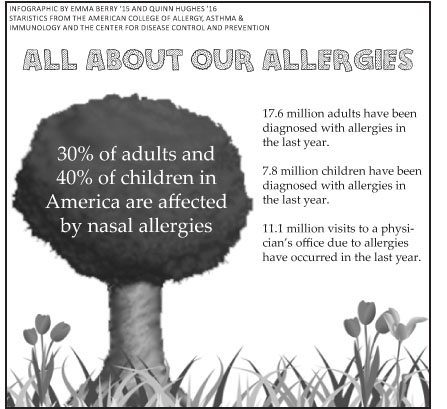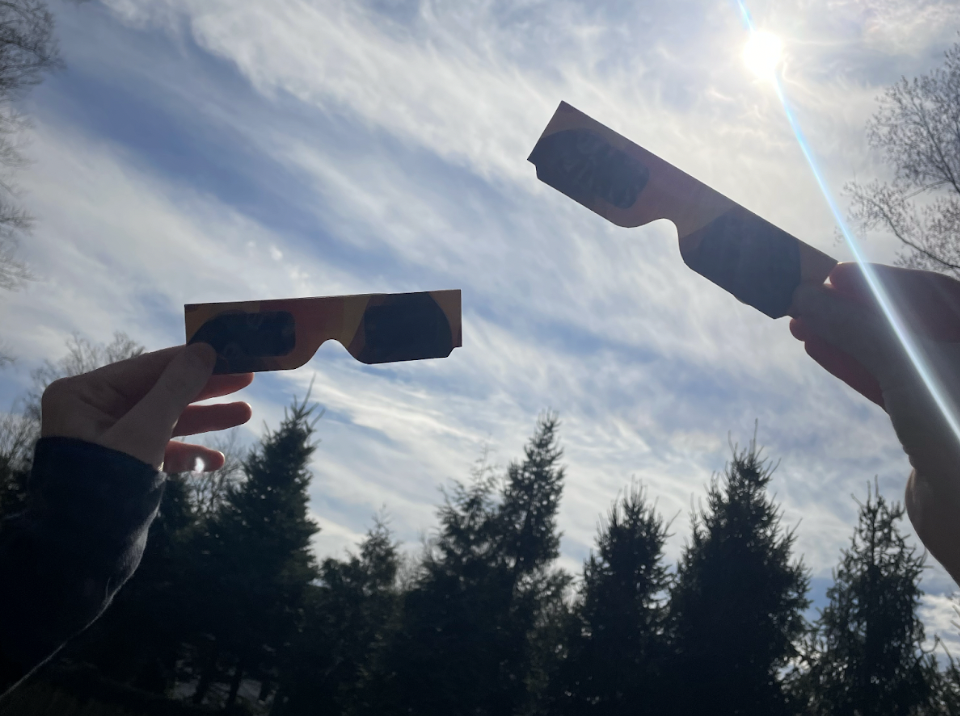Spring allergies strike Staples

Modern medicine has come pretty darn far in the last several decades. There have been cures developed for formerly fatal diseases like influenza and leprosy, and treatments for, among others, HIV.
So why are allergies still a thing?
I’m not talking about the classic lactose-intolerant, or the depressing peanut allergenic.
I’m talking about those spring allergies. Hay fever. When a little pollination leads to, give or take, two months of brutality.
And in my situation, as someone who has worn contact lenses since the start of middle school, the troubles only worsen.
Here’s my daily procedure: wake up, blow my nose, drown my pupils in eye drops, take around eight pills, dissolvers, and other forms of medication; blow my nose again, sneeze three times, rub my eyes, remember I’m not supposed to rub my eyes, reinsert the eye drops, try to find more tissues, give up on the search, and go to school.
And repeat.
All day.
Until I go to sleep.
For those who have dealt with chicken pox, I’d say allergies are the optical equivalent. The more times eyes get rubbed, like the scratching of the red dots, the worse the pain and discomfort gets. But avoiding the rubbing is one of the many challenges of allergy season.
Some might say that allergies are actually a blessing in disguise, that when they’re over, everything seems so great: the nature of late spring into early summer, the New England atmosphere, an appreciation for life.
And to that I say: blasphemy.


















































